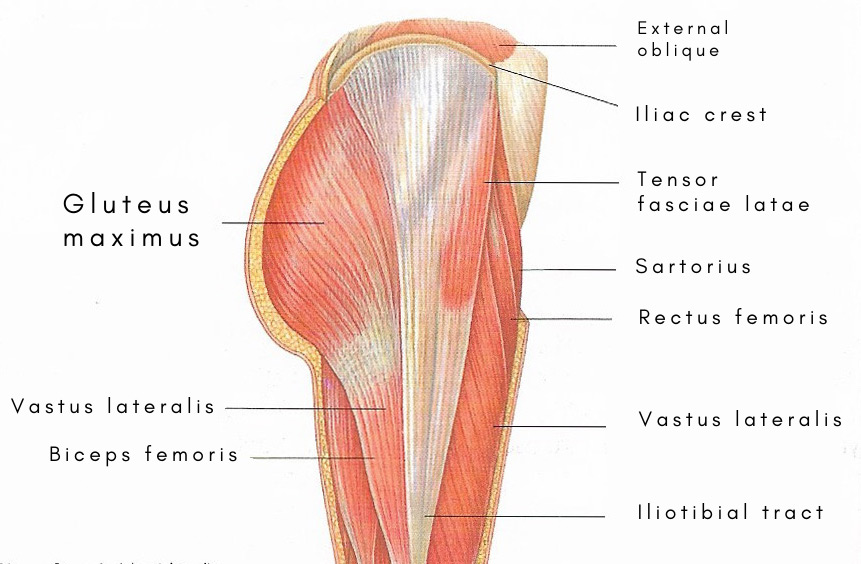gluteus maximus

The gluteus maximus is the large, powerful muscle in each of the buttocks which helps give them their rounded shape. The gluteus maximus is responsible for moving the thigh sideways and backward. It arises from (1) the rough, upper part of the area of the ilium behind the posterior gluteal line; (2) the back of the sacrum and coccyx; and (3) the sacrotuberous ligament. As the upper part approaches its insertion, it becomes aponeurotic (see aponeurosis); and this sudden thinning of the muscle accounts for the hollow of the hip behind the greater trochanter. The lower border of the muscle does not correspond to the fold of the buttock but crosses it obliquely.
From this extensive origin, the fasciculi of the muscle proceed obliquely downward and forward to the upper part of the shaft of the shaft of the femur; but only a portion of the muscle is inserted into the bone. Three-quarters of it is inserted into the iliotibial tract; only the lower deep quarter is inserted into the gluteal tuberosity
Three synovial bursae underlie the muscle: (1) a multilocular bursa separates its lower edge from the tendons that arise from the ischial tuberosity; (2) a large bursa separates the aponeurotic part from the greater trochanter; and (3) another large bursa separates the aponeurotic part from the upper part of the vastus lateralis.
The gluteus maximus is supplied by the inferior gluteal nerve. It is the chief extensor of the thigh at the hip joint and comes powerfully into action to straighten the lower limb on the trunk, or the trunk on the lower limb, in the act of rising from the stooping and squatting position, and in walking, running, and climbing.


